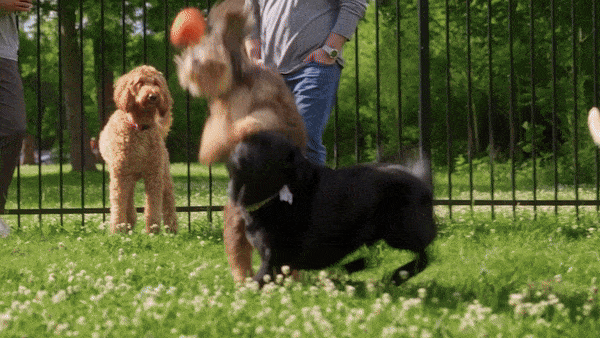Nom Nom Blog
Understanding & Managing Separation Anxiety in Dogs
One of the many upsides of summer is having some extra time off to spend with your dog. But once the fall rolls around, and everyone heads back to work and school, what happens to a pup left to wile away the hours alone at home?
For many families, this is when separation anxiety often begins to creep in, and the dog exhibits signs of emotional, physical and behavioral stress that's understandably upsetting not only to them, but to their parents.
That’s why it’s important to set your dog up for success, by anticipating and working on issues before they occur. Here’s how to know if your pup is experiencing separation anxiety, and what to do (hopefully before the signs start), in order to boost their ease and confidence with spending time alone.
_______________________________________________________________________________________________________________________________________
RECOGNIZING THE SIGNS OF SEPARATION ANXIETY
Understanding what separation anxiety looks (our sounds) like is the first step towards managing it. Common signs include:
EXCESSIVE BARKING OR HOWLING
Dogs with separation anxiety often vocalize persistently when left alone.
DESTRUCTIVE BEHAVIOR
Chewing, digging and scratching, especially around doors and windows, are typical behaviors.
PACING
Continuous, repetitive pacing can indicate anxiety.
HOUSE SOILING
Even house-trained dogs may urinate or defecate indoors when anxious.
ESCAPE ATTEMPTS
Desperate attempts to escape from confinement areas, like crates or rooms, can occur.
EXCESSIVE SALIVATION OR PANTING
These physical signs often accompany other behaviors.
_______________________________________________________________________________________________________________________________________
STRATEGIES TO MANAGE SEPARATION ANXIETY
GRADUAL DESENSITIZATION
Gradual desensitization involves slowly acclimating your dog to being alone. Start with very short absences (a few seconds) and gradually increase the duration over time. This process helps your dog learn that being alone is not something to fear.
CREATE A SAFE SPACE
Designate a comfortable area for your dog to stay while you’re away. This space should include their bed, favorite toys, and perhaps an item with your scent, like an old t-shirt. This helps create a positive association with being alone.
INTERACTIVE TOYS & PUZZLES
Keep your dog occupied with interactive toys and puzzle feeders. These toys can keep their mind engaged, reducing anxiety levels.
EXERCISE & MENTAL STIMULATION
Ensure your dog receives plenty of physical exercise and mental stimulation before you leave. A tired dog is less likely to experience anxiety. Long walks, play sessions and training exercises can help expend their energy.
ESTABLISH A ROUTINE
Dogs thrive on routine. Establish a consistent daily schedule for feeding, exercise and alone time. Predictable routines can help reduce anxiety because your dog knows what to expect.
PRACTICE CALM DEPARTURES & ARRIVALS
Avoid making a big fuss when leaving or returning home. Calm, low-key departures and arrivals can help prevent your dog from becoming overly excited or anxious.
BEHAVIORAL TRAINING
Consider working with a professional dog trainer or behaviorist who specializes in separation anxiety. They can provide tailored advice and techniques to help manage your dog’s anxiety.
COUNTERCONDITIONING
Counterconditioning involves changing your dog’s negative associations with being alone into positive ones. Offer a special treat or toy that your dog only gets when you leave, creating a positive connection with your departure.
_______________________________________________________________________________________________________________________________________
Managing separation anxiety is often a long-term commitment, and patience and consistency are key to helping your dog overcome their fears. Regularly reassess your approach and make adjustments as needed. Remember, every dog is unique, and what works for one dog may not work for another.
Celebrate small victories and progress, no matter how minor they may seem. Your support and commitment play a crucial role in helping your dog feel more secure and less anxious when you’re away.



